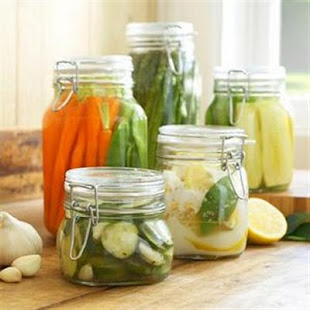Here's how I go about making our own fresh, creamy ricotta cheese. Heat two quarts goat's milk to 180 degrees on the stove top stirring frequently but gently to distribute the heat. As it nears the 180 degree mark, stir in two tablespoons of either apple cider or white vinegar. As you continue to heat the milk, you will notice that the acid in the vinegar will begin to coagulate the milk and the yellowish whey will begin to separate. You may have to raise the temperature up to 200 degrees to achieve separate of curds and whey but do not let it go any further than that. If you have reached 195 degrees and there is no separation, add an additional tablespoon of vinegar and that should do the trick as it continues to climb to the 200 degree mark. Once you see the curds really begin to form, remove from the heat and allow to cool. The curds should float on the whey and form a semi-solid mass. For the creamiest ricotta, allow to cool undisturbed for a half of an hour. You can then gently lift the curds off of the whey with a slotted spoon and place them into a container. You may occasionally need to drain extra whey from your container as you fill it with the warm curds. Refrigerate and use within the week.

That's all there is to it. Once you're comfortable with making your own ricotta, next thing you know you'll be hankering for some semi-soft cheese as well. It's easier than you think and more rewarding as well. Enjoy!
.jpg)
.jpg)
.jpg)

.jpg)





.jpg)



